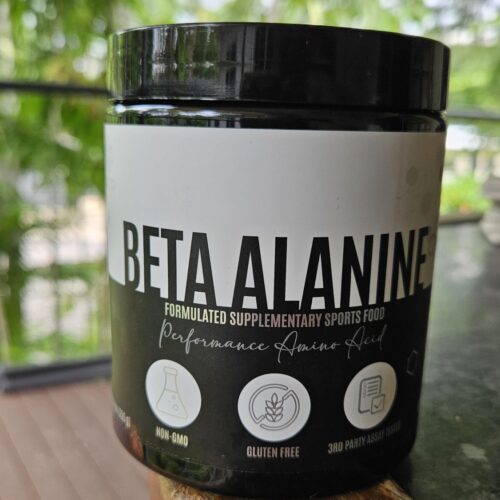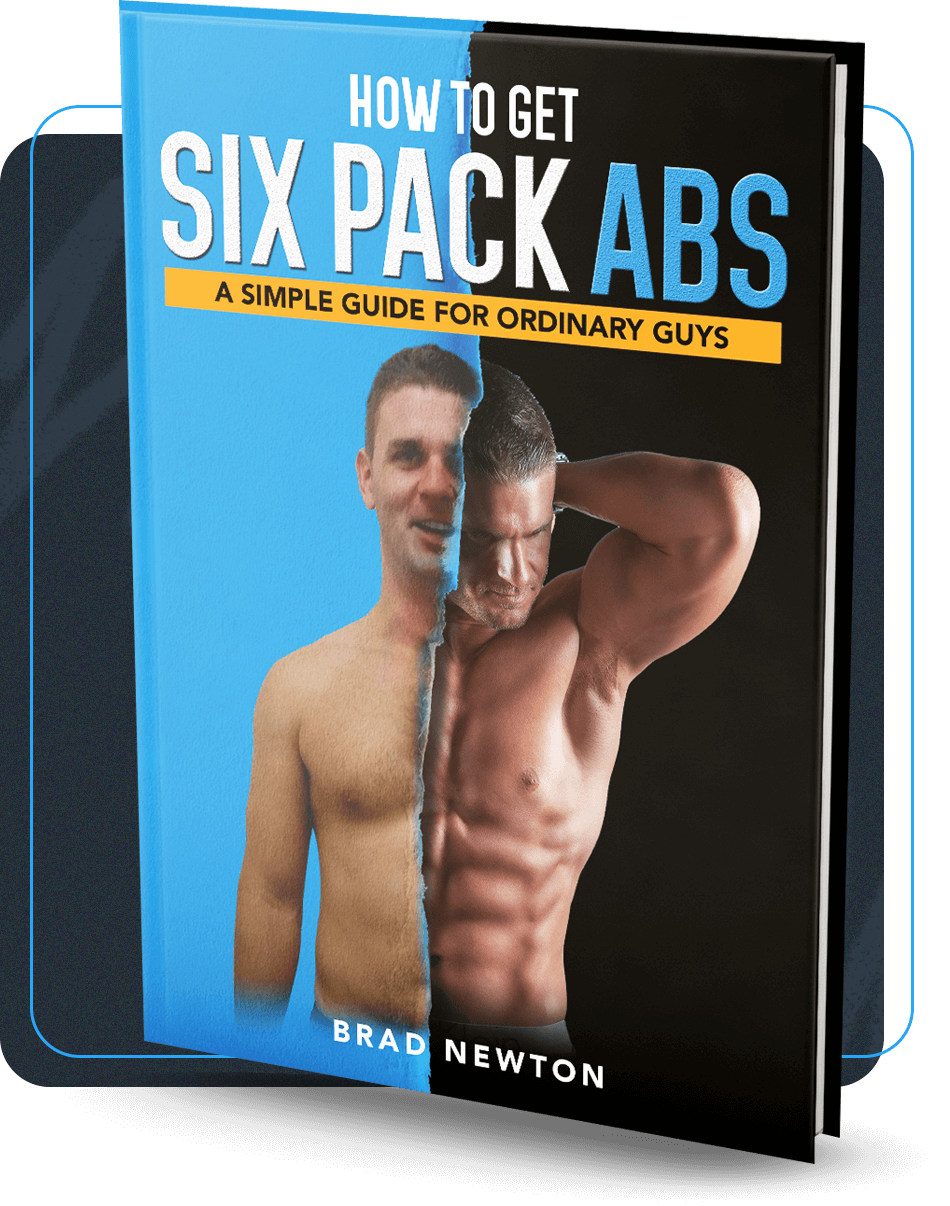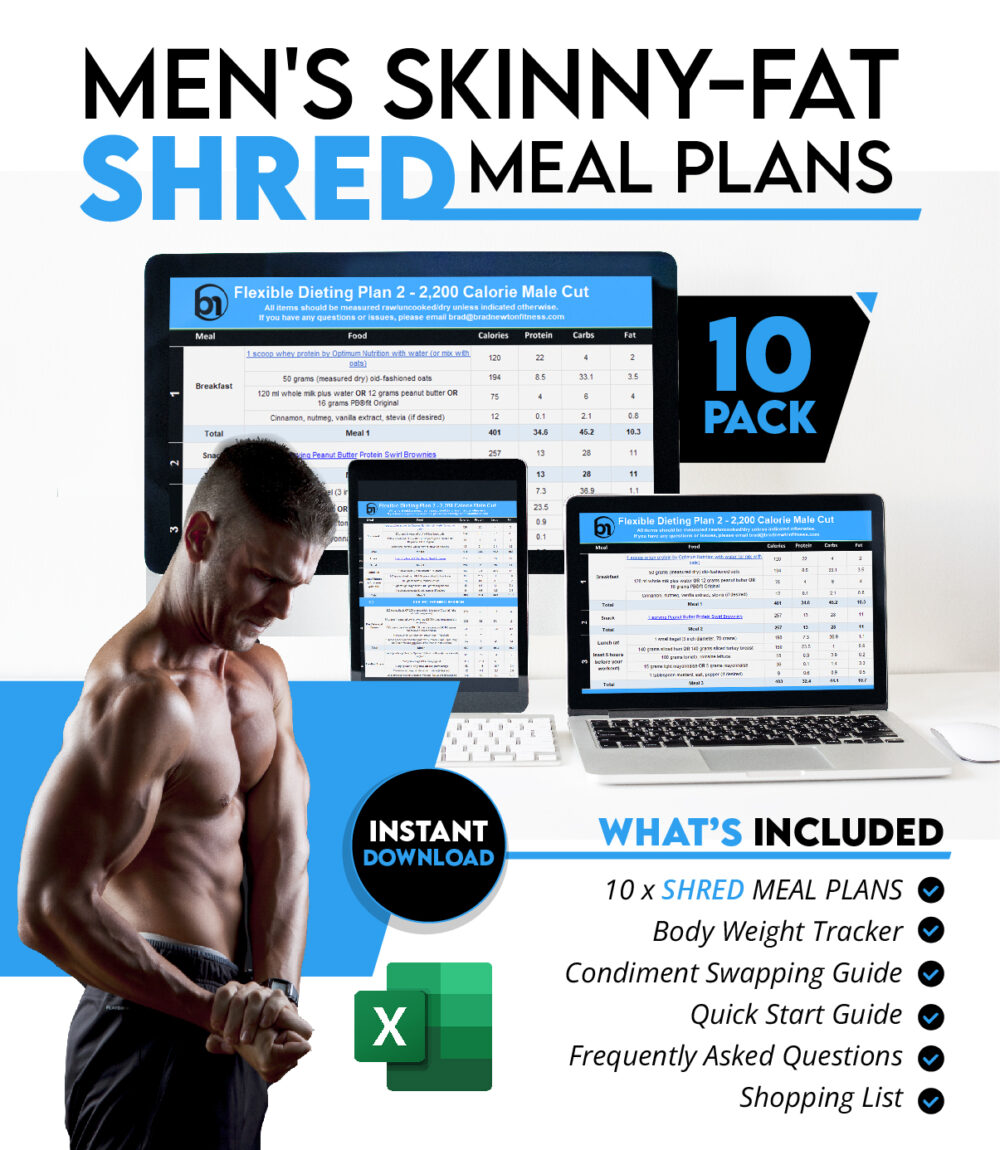
If you’re a skinny-fat guy, you know the struggle—soft around the middle, no real muscle definition, and frustrated with your physique. You’ve probably tried cutting calories to lose fat, only to end up looking even skinnier. Or maybe you’ve hit the weights, expecting to pack on size, but just ended up looking the same—just fluffier.
One of the biggest mistakes I made when I was skinny-fat (many years ago) was not getting enough protein. When I started using whey protein, it made hitting my daily protein targets so much easier—and that was a game-changer for building muscle and finally leaning out.
For me, whey protein isn’t just another gym supplement—it’s a must-have for transforming your body. Unlike fad diets and extreme bulking phases that leave you spinning your wheels, whey protein helps you build muscle while keeping fat gain to a minimum. It’s rich in leucine, the key amino acid that triggers muscle growth, and digests quickly, making it the perfect post-workout recovery fuel.
If you’re serious about getting lean and muscular without piling on unnecessary fat, you need a smart nutrition strategy that actually works—and whey protein is one of the best tools in your arsenal. In this guide, we’ll break down everything you need to know about whey protein, from choosing the right type to getting the best results. Whether you’re new to training or looking to fine-tune your approach, this will be your go-to resource for whey protein and body transformation.
What Is Whey Protein?
Whey protein is one of the best and most effective protein sources for muscle growth, recovery, and overall body transformation. It’s a byproduct of cheese production—when milk is curdled and strained, whey is the liquid that’s left over. In the past, it was just thrown away as waste. But then, scientists discovered that this ‘waste’ was packed with high-quality, complete proteins essential for muscle growth and repair. And just like that, whey protein became a staple in the fitness world.
So why does whey get so much attention? Is it really worth the hype?
Absolutely. Whey protein is incredibly popular among athletes, bodybuilders, and anyone serious about their physique because of its superior amino acid profile—especially its high leucine content. Leucine is the powerhouse amino acid that kickstarts muscle protein synthesis, the process that repairs and builds muscle tissue.
Whey is also one of the fastest-digesting protein sources out there, making it ideal post-workout fuel. The quicker your body absorbs protein, the faster it can start rebuilding muscle. This is why countless studies have proven that whey protein is one of the most effective supplements for muscle growth and recovery.
But here’s the thing—not all whey protein powders are created equal. If you’re serious about results, it’s worth knowing the difference between the types of whey available and which one suits your goals best.
Three Types of Whey Protein
The three main types of whey protein powder are whey concentrate, whey isolate, and whey hydrolysate. Each has its own benefits, depending on your goals, budget, and how well your body tolerates dairy.
1️⃣ Whey Protein Concentrate (WPC)
This is the most common and cost-effective form of whey. It typically contains 30–80% protein by weight, with the rest made up of carbohydrates (mainly lactose) and fats. Because it’s the least processed, it retains more of whey’s natural nutrients, making it a solid choice for overall health and muscle growth. However, if you’re lactose intolerant, this might not be the best option for you.
2️⃣ Whey Protein Isolate (WPI)
Whey isolate goes through additional processing to remove most of the fats and lactose, resulting in a 90%+ protein content by weight. It’s ideal if you want a leaner protein source with minimal carbs and fat, or if you struggle with dairy digestion. It also absorbs quickly, making it a great post-workout option. The downside? It’s more expensive than concentrate. I usually recommend my online fitness clients try whey protein isolate if they feel bloated or have lactose intolerance.
3️⃣ Whey Protein Hydrolysate (WPH)
This is the most refined version of whey, where the protein is pre-digested through hydrolysis, breaking it down into smaller peptides. This makes it the fastest-absorbing form, which is why it’s often used in medical nutrition and baby formulas. While it’s great for rapid muscle recovery, it’s usually the most expensive option and has a slightly bitter taste due to the hydrolysis process. When I first started taking whey protein, I thought I needed to take whey protein hydrolysate. After several months of spending hundreds of dollars on this type of whey protein, I decided to use a whey protein isolate and save some money!
Which Type of Whey Protein Should You Buy?
Well, there are a few things to consider before you grab the first tub you see.
A lot of brands push whey isolate and whey hydrolysate as superior to whey concentrate because they contain more protein per scoop and fewer extras like lactose and fat. But here’s the truth—when used as part of a balanced diet, there’s no solid evidence that isolates or hydrolysates provide any major advantage over a good-quality concentrate.
That said, going for the cheapest whey isn’t always the best move either. While a high-quality whey concentrate is around 80% protein by weight, some lower-end concentrates can be as low as 30%—which begs the question: what’s in the rest of it? Unfortunately, it’s often a mix of fillers like maltodextrin or even flour, which means less protein and more junk.
One big advantage of a pure whey isolate is that it’s virtually lactose-free, making it easier to digest for those with dairy sensitivities. I hear this a lot from my online coaching clients who have struggled with bloating or stomach discomfort from whey concentrate but feel great using a 100% whey isolate.
With whey protein, you get what you pay for. If a product is significantly cheaper than the going rate, chances are it’s packed with low-quality ingredients.
But don’t fall into the trap of thinking high price automatically equals high quality either. Some dodgy supplement companies play sneaky marketing tricks—for example, they’ll take a low-quality concentrate, add a tiny amount of isolate or hydrolysate, call it a “blend,” and then plaster “Whey Isolate” all over the packaging.
How to Spot a High-Quality Whey Protein
To avoid getting ripped off, always check the ingredient list and compare the protein per scoop to the total scoop size. Here’s what to look for:
✅ Whey concentrate, isolate, or hydrolysate listed as the first ingredients (ingredients are listed in order of predominance by weight).
✅ A scoop size that’s relatively close to the amount of protein per serving (it’ll never be exact due to flavouring and sweeteners, but if there’s a huge gap, be sceptical).
✅ No fillers like maltodextrin, creatine, or other random additives listed before the protein source. If something like maltodextrin is ahead of the protein on the label, run the other way!
For example, if a scoop is 40g but only contains 22g of protein, ask yourself: What’s in the other 18g? If it’s a mass gainer, fair enough—it’ll have extra carbs. But if it’s just a standard whey protein, you’re probably paying for fillers. The bottom line is you need to read labels, compare protein content, and don’t get sucked in by marketing gimmicks. A solid whey protein should be straightforward, high in protein, and free from unnecessary junk.
Related: Still stuck in the skinny-fat trap? You train hard, eat “healthy,” but still look soft instead of strong—sound familiar? Stop spinning your wheels. I’ll show you exactly how to build muscle, drop fat, and finally get the lean, athletic physique you’ve been chasing 👉 Click here to apply for online coaching today!
Benefits of Whey Protein
Whey protein is a real game-changer for muscle building. Thanks to its high content of leucine – one of the key amino acids that jump-start muscle protein synthesis – it helps repair and grow your muscles after a hard session. Research backs this up; for instance, studies show that leucine-rich proteins can trigger the mTOR pathway, the engine behind muscle growth.
Protein, in general, helps you feel fuller for longer. Whey protein can help control hunger, making it easier to maintain a calorie deficit without losing muscle. This is particularly handy if you’re trying to shed some fat while keeping your hard-earned muscle. When I’m working with my online fitness clients, one of the first things we work on his increasing their protein intake (calculate it here). By doing this, it helps keep them satiated for longer and therefore easier to remain in a calorie deficit to shred weight.
Whey protein isn’t just for muscle – it can also boost your immune system with its bioactive compounds and may even help increase your body’s natural antioxidant levels by boosting glutathione.
How to Use Whey Protein
The perfect ratio between whole food and supplement protein is still up for debate, but the general rule is to get at least 50% of your daily protein from whole food sources. Personally, I usually have 30-40 grams of whey protein (as a shake) in the morning and another 30-40 gram whey protein shake mid-afternoon. The rest of my protein requirements are met with whole food (i.e., chicken, tuna, salmon, beef).
Remember, whey protein is a supplement, not a replacement for real food. It’s there to fill the gaps, not be your primary protein source. The only time I recommend my online coaching clients rely more on whey protein for their daily intake is when they’re travelling overseas and packing a tub in their checked luggage. This ensures they have a consistent protein source on the go, making it easier to stay on track with recovery and muscle maintenance while away from their usual meal routine.
We know that whey protein is one of the best post-workout protein sources, but how much do you actually need?
Research suggests that 20 grams of whey post-workout is enough to maximise muscle protein synthesis—in other words, taking more than that won’t necessarily lead to more muscle growth. Sounds simple, right?
Well, not quite. Protein needs vary from person to person, depending on factors like:
🔹 How much muscle you have – The more muscle you carry, the more protein your body needs to maintain and build lean mass. You’ve got a bigger “storage tank” for amino acids compared to someone with less muscle.
🔹 How active you are – The more you train, the more protein your body burns through. Regular gym-goers, athletes, and people doing high-intensity workouts need more protein to support recovery and muscle repair.
🔹 Your age – As we get older, our bodies become less efficient at using protein, which means we need more to maintain muscle. Research shows that 35–40 grams of protein post-workout stimulates better muscle protein synthesis in older adults compared to just 20 grams.
🔹 Your hormonal profile – Anabolic hormones like testosterone, growth hormone, and IGF-1 help drive muscle growth. If your levels of these are high, your body can make better use of higher protein intake. On the flip side, chronically high cortisol (stress hormone) can slow down protein synthesis and actually increase muscle breakdown, meaning you may need more protein to counteract this.
So while 20 grams might be enough for some, it won’t be optimal for everyone. If you’re leaner, more muscular, and training hard, you’ll likely benefit from 30-40 grams post-workout (which is what I personally do!).
Whey as a Pre-Workout?
Whey protein isn’t just for after training—it can also be an effective pre-workout supplement. Studies show that consuming protein 30 minutes before training can reduce muscle damage and soreness, helping you recover faster.
The Best Whey Protein Powder
Choosing the right whey protein comes down to quality, taste, mixability, and value. When my online coaching clients ask me for recommendations on the ‘best’ whey protein powder, I usually suggest any of the following:
✅ Transparent Labs 100% Grass-Fed Whey Protein Isolate – Sourced from grass-fed cows, this whey protein isolate is non-GMO and free from artificial sweeteners, food dyes, and preservatives. It offers a clean profile suitable for those avoiding unwanted chemicals.
✅ Legion Whey+ – This whey isolate is sourced from small dairy farms in Ireland and is free from artificial sweeteners, flavours, and food dyes. It’s a high-quality option for those seeking a clean protein supplement.
✅ Naked Whey – This protein powder contains only one ingredient: grass-fed whey protein. It’s free from artificial sweeteners, flavours, and colours, providing a pure protein source without unnecessary additives.
R1 Whey Protein Blend: A Technical Review
For the past four weeks, I’ve been thoroughly sampling Rule One Proteins’ R1 Whey Blend, and here’s my technical take on it. And by the way, I’m not paid or sponsored by this brand…
R1 Whey Blend is designed to combine the best of both worlds – the quick absorption of whey protein isolate and the creamy taste of whey protein concentrate. Each serving delivers roughly 25 grams of protein with around 110 calories, keeping fats and carbs minimal. It’s formulated for rapid post-workout recovery without compromising on flavour.
In my experience of trying dozens and dozens of products over the years, 25 grams of protein for 110 calories is quite “clean” for a whey protein powder. In other words, it doesn’t have any unnecessary junk ingredients you’ll find in many other whey protein products on the market.
My Technical Insights
Formulation:
A smart blend of isolate and concentrate designed to deliver a robust amino acid profile for muscle repair. The processing ensures it’s both fast-digesting and gentle on the stomach. Personally, I usually prefer a whey protein that blends whey protein isolate with whey protein concentrate. It’s also cheaper to buy compared to pure whey protein isolate.
Mixability and Taste:
I’ve found it mixes exceptionally well – no clumping, whether you mix it with water or milk. The flavour is natural, not overly sweet, and works great in shakes and even in recipes. If I’m really trying to ‘save’ my calories then I’ll mix it with water otherwise, I’ll usually mix it with an unsweetened almond milk.
Nutritional Profile:
Approximately 25g of protein per serving with low fats and carbs, making it suitable for both muscle gain and lean muscle preservation.
Pros and Cons
Pros:
✅ High-Quality Protein Blend: Excellent amino acid profile from the combination of isolate and concentrate. It contains a high concentration of branched-chain amino acids (BCAAs). Each serving of R1 Protein contains over 6 grams of naturally occurring BCAAs, including leucine, isoleucine, and valine. These amino acids are crucial for stimulating muscle protein synthesis, enhancing recovery, and reducing muscle breakdown during intense training sessions.
✅ Rapid Absorption: Ideal for immediate post-workout recovery.
✅ Superior Mixability: Dissolves smoothly without clumps.
✅ Clean Nutritional Profile: Around 25g of protein per serving with minimal extras. As mentioned, it’s only 110 calories per serve!
✅ Natural Taste: Balanced flavour that works well in various recipes.
Cons:
✅ Premium Price: It’s positioned as a high-end product, so it comes with a higher price tag.
✅ Limited Flavour Options: The range is a bit restricted compared to some competitors I’ve tried.
For a closer look at R1 Whey Blend, check it out on the Rule One Proteins website.
My Experience
After four weeks of consistent use, I’ve experienced no digestive issues. I cannot say that I’ve noticed dramatic improvements in my recovery post-training. But, like all whey protein powders, I only take them purely out of convenience of trying to achieve my daily protein target. It mixes well, tastes great, and I’ve been having two protein shakes a day of Rule 1 (consisting of 40 grams of protein per shake), alongside 5-7 grams of creatine monohydrate.
Wrapping it Up!
Whey protein is a cornerstone of any effective muscle-building and recovery plan. Whether you choose an isolate for its rapid absorption or a concentrate for its creamier taste and cost-effectiveness, what matters most is that you get a high-quality product that works for you. In this guide, we’ve broken down the benefits of whey protein, compared top products, and even taken an in-depth look at R1 Whey Blend after four weeks of testing.
At the end of the day, success comes from pairing a great supplement with consistent training, proper nutrition, and ample recovery. Always remember to consult with a healthcare professional if you have any concerns about adding whey protein to your diet.
🔥 Skinny Fat? Let’s Change That—For Good.
Tired of spinning your wheels with random workouts and confusing diets? My proven coaching system was built specifically for skinny-fat guys who want to build lean muscle, drop stubborn fat, and finally look like they lift.
✅ Step-by-step hypertrophy training (no guesswork)
✅ High-protein meal structure—no boring diets, no starvation
✅ 100% online with real support from me every step of the way
Frequently Asked Questions
Is whey protein safe for long-term use?
For most healthy individuals, whey protein is safe when consumed in moderation as part of a balanced diet. If you have any pre-existing health issues, it’s best to get professional advice.
How do I choose between whey protein isolate and concentrate?
If you’re sensitive to lactose or need a fast-digesting protein post-workout, go for an isolate. For a more budget-friendly, creamier option, concentrate might be your best bet.
When should I take whey protein?
The best time is within 30–60 minutes after your workout. You can also use it throughout the day to meet your overall protein needs.
Can I mix whey protein into my meals?
Absolutely – whey protein is very versatile. Add it to your smoothies, oatmeal, or even baked goods for an extra protein kick.























